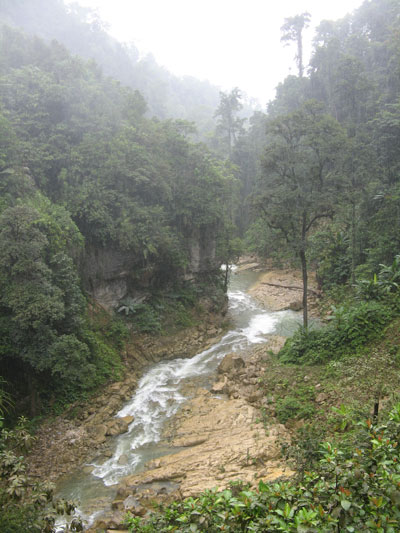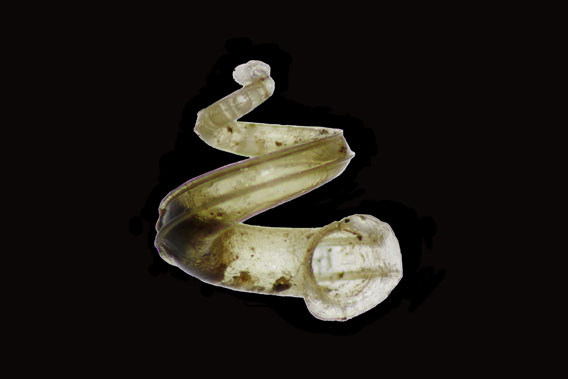
Shell of the new micro-snail, Ditropopsis mirabilis. Photo by: Kristine Greke.
A new species of snail with a bizarre shell has surprised scientists. Discovered near massive waterfalls in pristine lowland rainforest in New Guinea, the tiny new species’ shell is shaped like a cornucopia, spirals flying freely instead of fused together like most shells.
Latvian malacologist (one who studies molluscs) Kristine Greke, who described the new species, named it Ditropopsis mirabilis, meaning miraculous or extraordinary. To date, scientists are uncertain why the super small snail—2 to 6 millimeters (0.07 to 0.23 inches)—would have evolved such a strange shell.
Greke also discovered two other new snails in the same genus, all of which are published in the book Biodiversity, Biogeography and Nature Conservation in Wallacea and New Guinea. Nearly all snails in the Ditropopsis genus in the region are found no-where else and survive in very small ranges.
According to entomologist Dr. Dmitry Telnov, Greke is “almost the only person nowadays working on taxonomy, biogeography and ecology of Wallacean and Papuan non-marine mollusks.”
Ditropopsis mirabilis was found in the forests’ leaf litter near the Sakartemen waterfalls in Indonesian Papua. Though little-known to rest of the world, the three falls—named child, woman, and man in Indonesian—are so large they can be seen from an airplane.
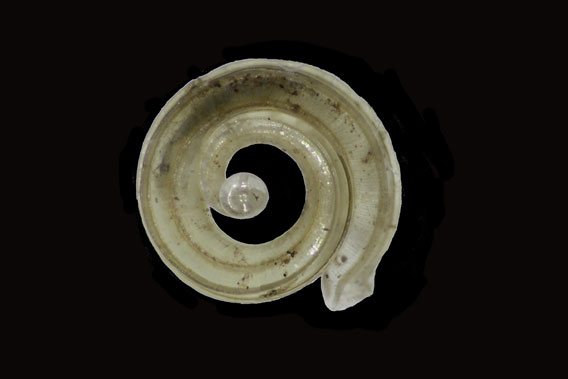
Shell of the new micro-snail, Ditropopsis mirabilis. Photo by: Kristine Greke.
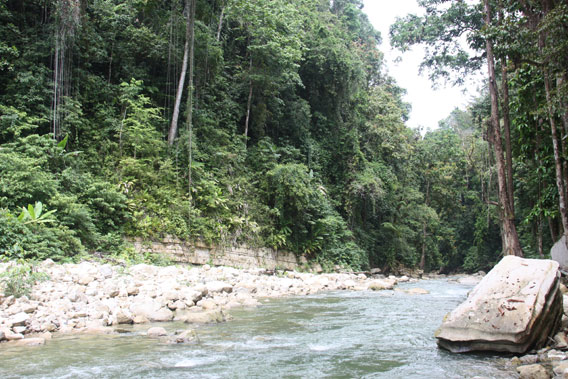
The Sakartemen River. Photo by: Kristine Greke.
The Sakartemen River. Photo by: M.Kalnins (the Entomological Society of Latvia).
The Sakartemen falls, person at bottom-center for size comparison. Photo by: M.Kalnins (the Entomological Society of Latvia).
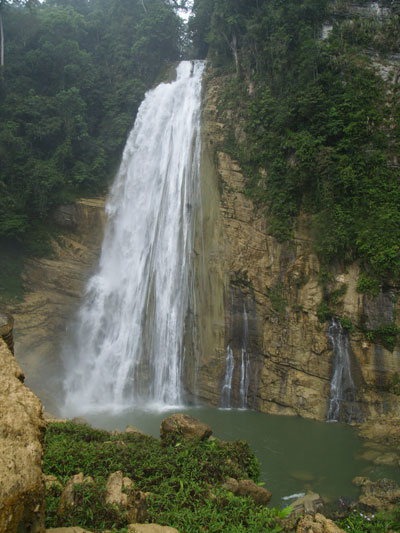
The Sakartemen falls. Photo by: M.Kalnins (the Entomological Society of Latvia).
Related articles
Beetle bonanza: 84 new species prove richness of Indo-Australian islands
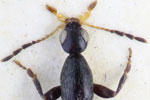
(11/08/2011) Re-examining beetle specimens from 19 museums has led to the discovery of 84 new beetle species in the Macratria genus. The new species span the islands of Indonesia, New Guinea, and the Solomon Islands, tripling the number of known Macratria beetles in the region. “Species of the genus Macratria are cosmopolitan, with the highest species diversity in the tropical rainforests. Only 28 species of this genus were previously known from the territory of the Indo-Australian transition,” Dr. Dmitry Telnov with the Entomological Society of Latvia, who discovered the new species, told mongabay.com.
Photos: three bizarre bats discovered in Southeast Asia
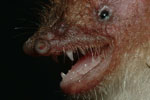
(10/30/2011) In the forests of Cambodia and Vietnam, researchers have discovered three new species of tube-nosed bats, known for extraordinary nostrils that look like blooming flowers. The new bats, described in the Journal of Mammalogy, are likely imperiled by deforestation. “They all possess specially shaped nostrils (hence the name for the group) the exact role of which not known yet,” Gabor Csorba, lead author of the paper with the Hungarian Natural History Museum, told mongabay.com.
Giant one-celled organisms discovered over six miles below the ocean’s surface
(10/23/2011) Imagine a one-celled organism the size of a mango. It’s not science fiction, but fact: scientists have cataloged dozens of giant one-celled creatures, around 4 inches (10 centimeters), in the deep abysses of the world’s oceans. But recent exploration of the Mariana Trench has uncovered the deepest record yet of the one-celled behemoths, known as xenophyophores.
